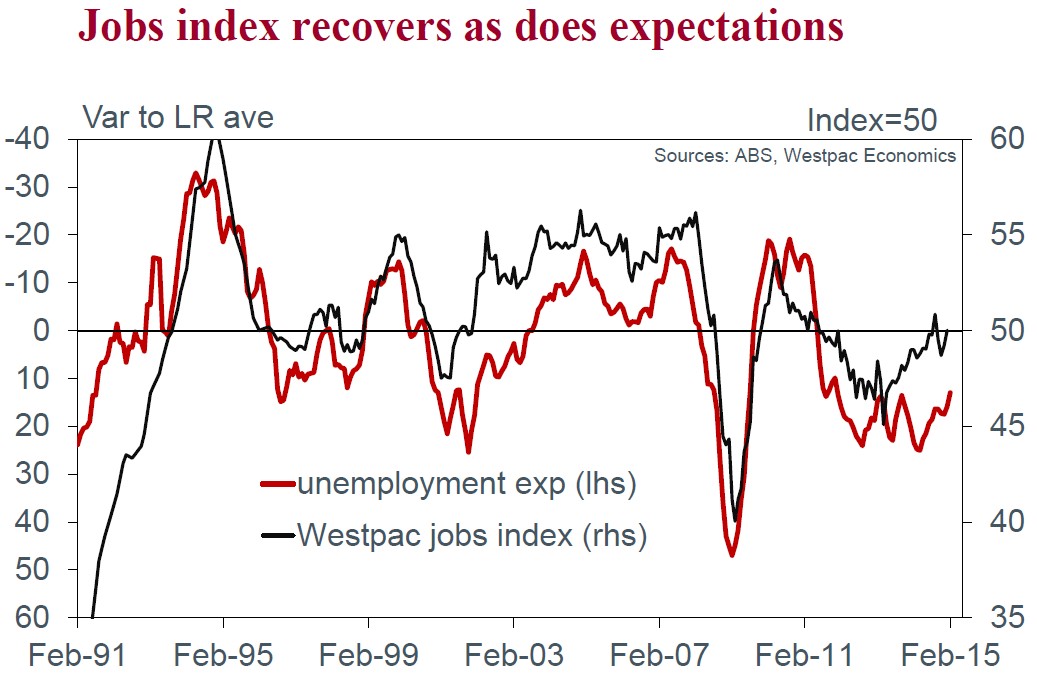From Justin Smirk at Westpac:
The Westpac-Melbourne Institute Unemployment Expectations Index fell 1.9% in Feb. The index has fallen in 8 of the last 12 months to be down 5.2% in the year. Recall that a lower (higher) reading from the index indicates reduced (increased) concern around the labour market.
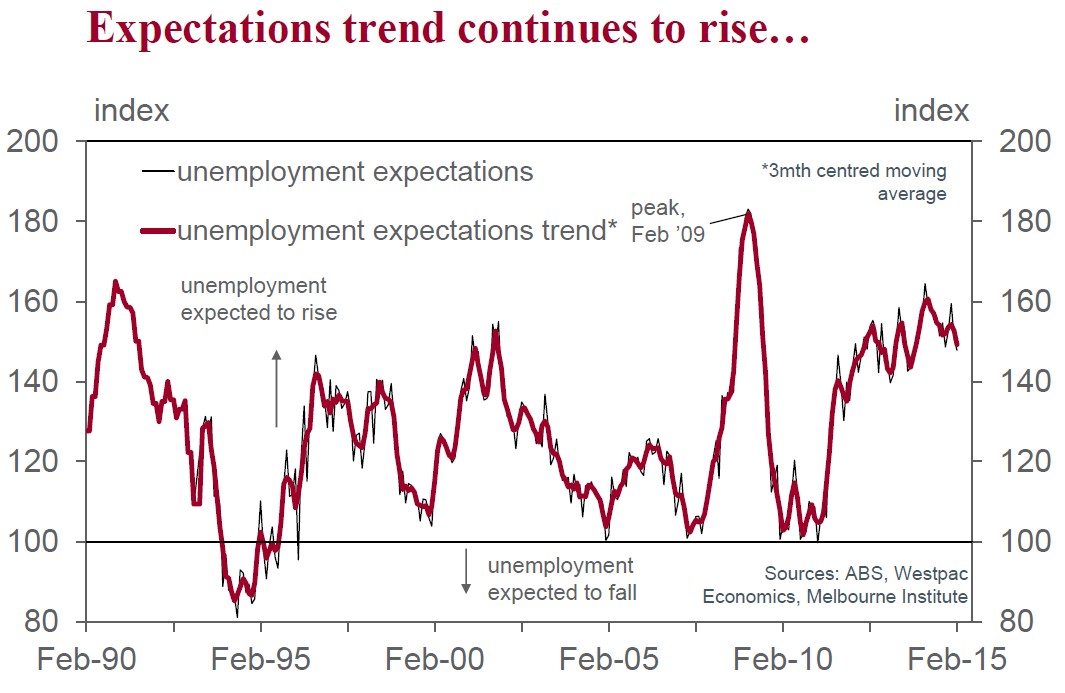
In trend terms, the index fell 0.3% following a 0.3% decline in Jan (revised from 0.5%) and –0.2% in Dec (revised from a 0.4% rise. Last month we noted the trend deterioration in expectations still held, if only just. In Jan this was no longer the case and a trend improvement has returned.
As 2015 started, we were getting signs that households may have be getting a little more positive about the labour market. This Feb update continues this trend and it is something we are watching closely.
During 2014, there was only a small rise in the unemployment rate of 0.2% to 6.1% well under what the level of unemployment expectations had been suggesting. Remember the question is about the change in unemployment so the level of the index should be compared to the change in the unemployment rate.
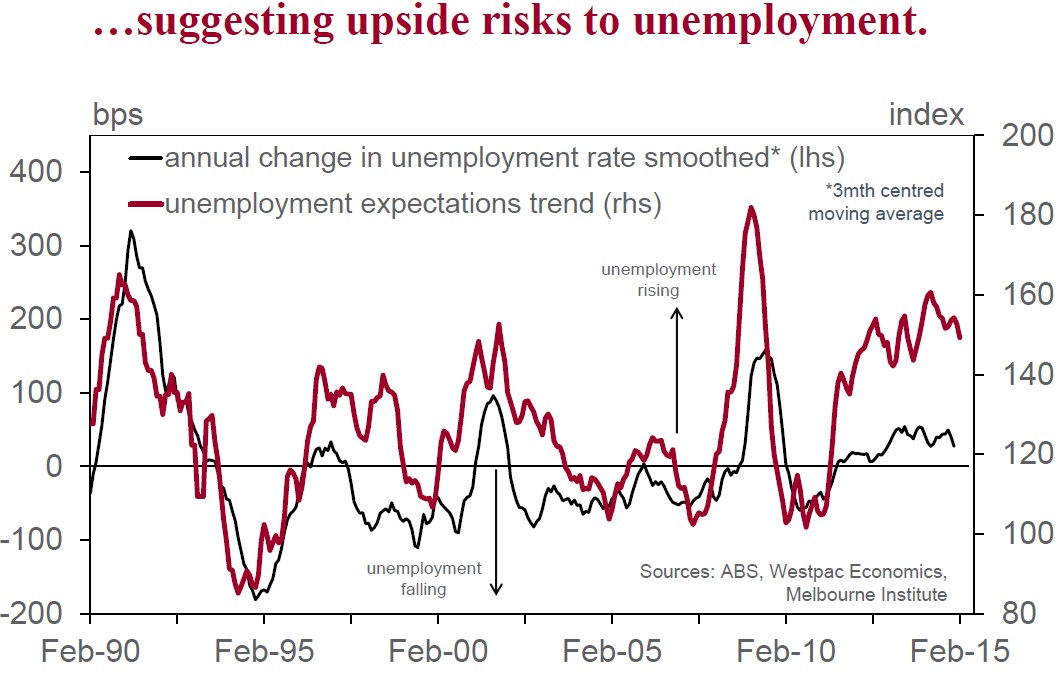
Compare this to the change in the employment to population ratio, which is immune to any changes in the participation ratio. Through the year to Dec, the employment/pop ratio was flat thus generating a pop in the annual change in employ/pop ratio in Chart 8. This has divergence to unemployment expectations has happened before and can last for a number of months. But in the end, the change in employment to pop ratio tends to correct to level of unemployment expectations.
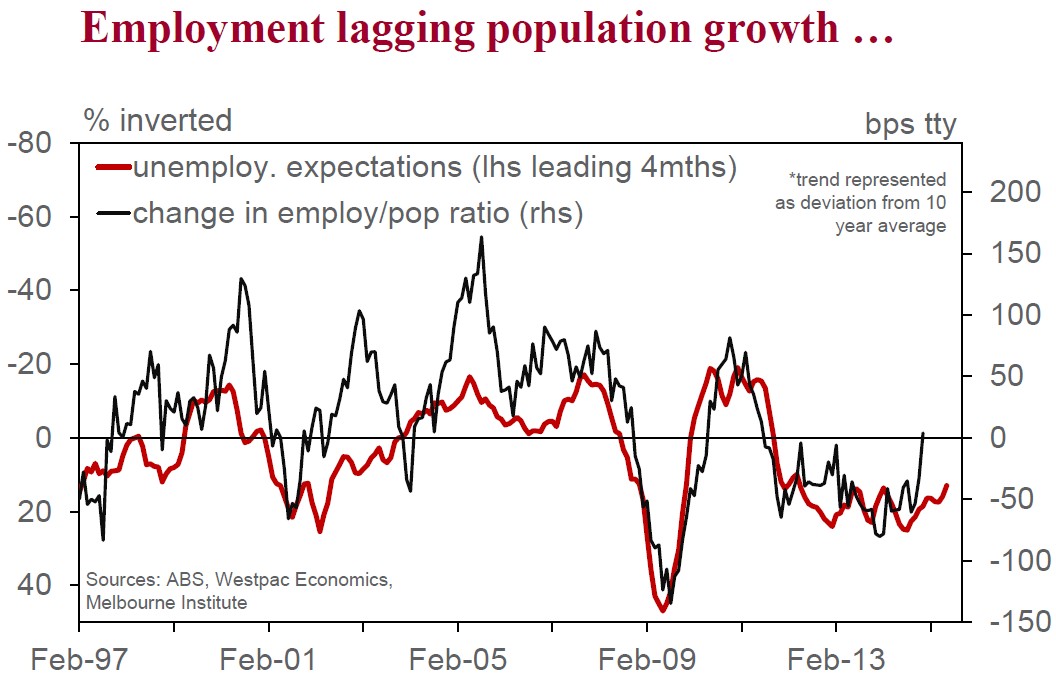
So despite the improvement in expectations, households continue to believe that current pace of employment growth is not robust enough to support the growth in the labour market.
Since mid-2013 growth in hours worked has been running well ahead of expectations. Hours worked eased in Dec, but they were still well above what expectations would suggest . Hours worked have eased in NSW and more so in Vic but appear to have overshot to the downside in Qld. We are watching to see how large the correction will be in WA given the large overshoot to the upside and just how deep the unfolding correction in SA will be.
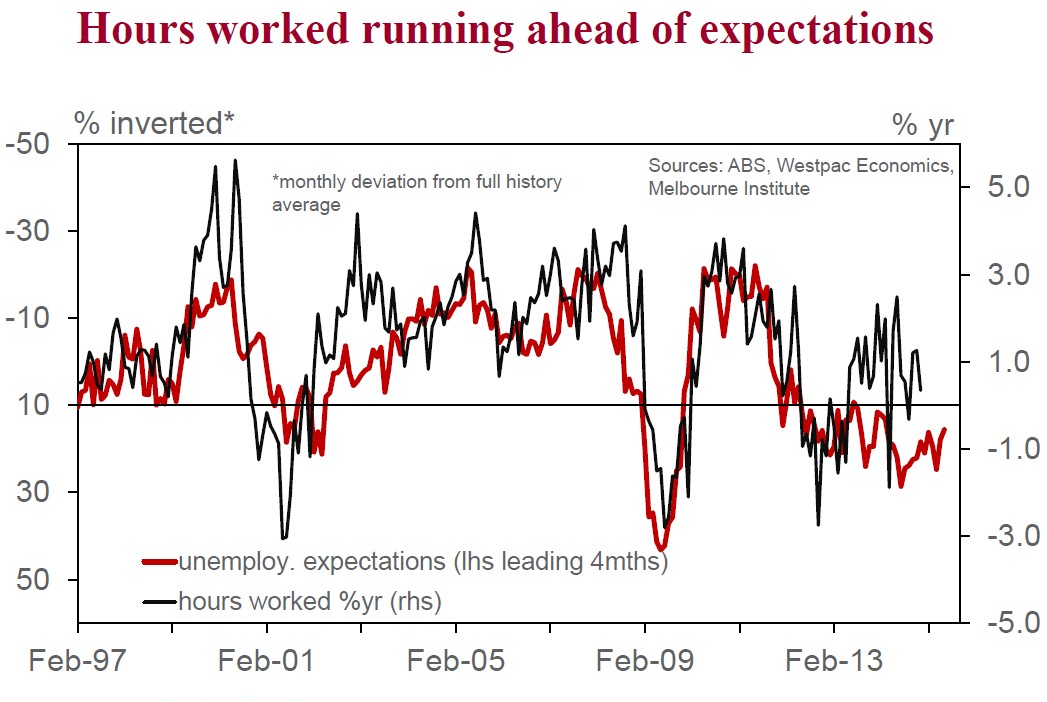
Unemployment expectations can diverge by city & state. Expectations are deteriorating quite rapidly in WA while NSW, Vic and Qld all are about the same relative to their long-run average.
It is worth noting that those employed as labourers/operators have seen the largest deterioration in expectations and the gender wedge has re-emerged with males the most worried about unemployment.
The level of unemployment expectations remains high but for now at least, the trend is falling again which should represent an easing in disinflationary pressures on the economy.
But what we have found is that it is the change in expectations, rather than the level, that is the more important guide to any possible change to the stance of monetary policy. The recent trend improvement in expectations suggests that the recent rate cut may have already had an impact on expectations. Now we have to wait to see if it translates thought to real economic activity.
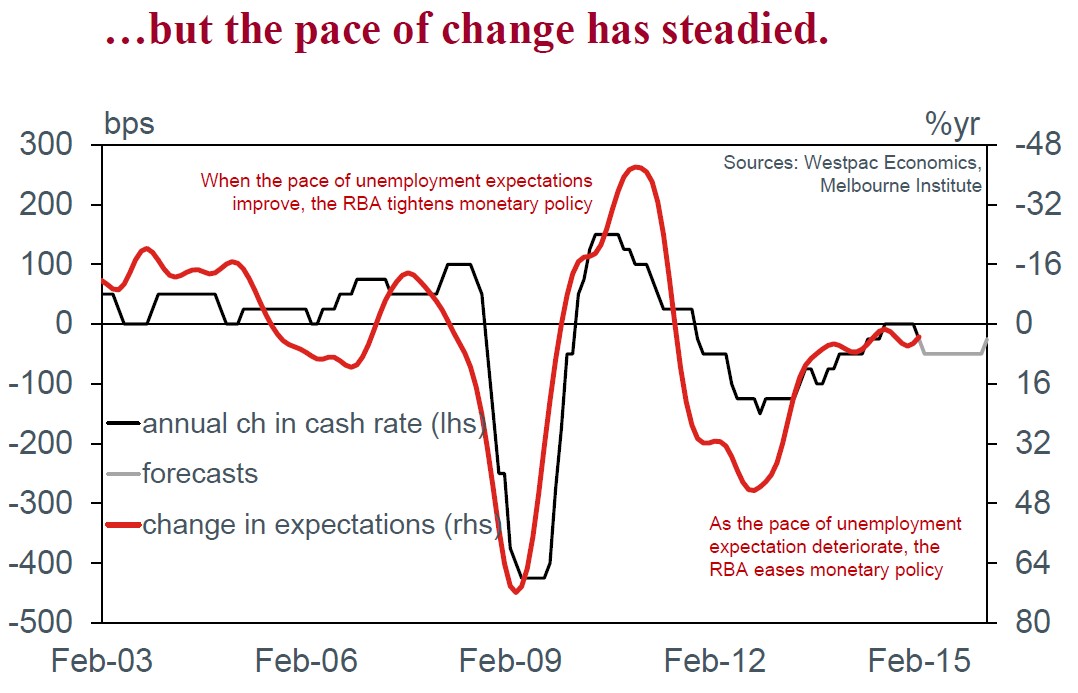
The recent lift in Westpac’s Jobs Index, back to its long run average, is also a promising sign. Should this continue we would expect that unemployment expectations also to improve (fall) over time.
